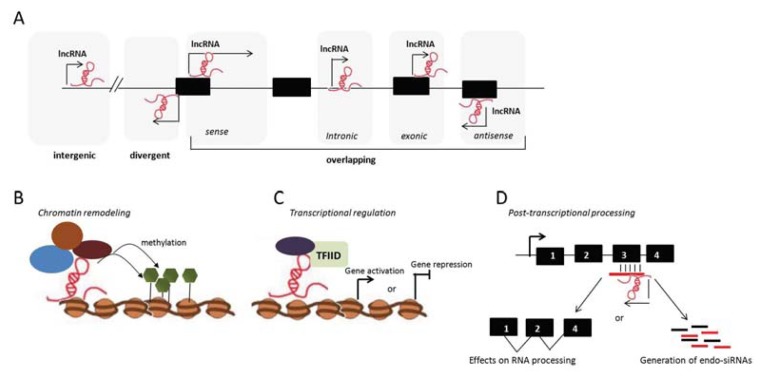Figure 2.
Long non coding RNAS (lncRNAs): mechanism of action and genomic organization. Illustrative representation of lncRNAs classification relative to their genomic position or mechanism of action. (A) lncRNAs are generally classified according to their proximity to protein coding genes in the genome: intergenic lncRNAs are distant from protein coding regions; divergent lncRNAs are located on the opposite strand closed by the transcription starting site of a protein coding gene; intragenic lncRNAs overlap protein coding genes and can be sense, antisense, intronic or exonic; (B) lncRNAs can recruit chromatin remodeling complexes to specific genomic loci, to epigenetically mark the region for gene silencing; (C) lncRNAs can permit the recruitment of transcription factors activating gene expression or can interfere with the transcription machinery, occluding the access of transcription factors and, thereby, silencing the gene; (D) lncRNAs that are antisense to protein coding genes may regulate the splicing or induce the degradation of their corresponding mRNA transcripts.

